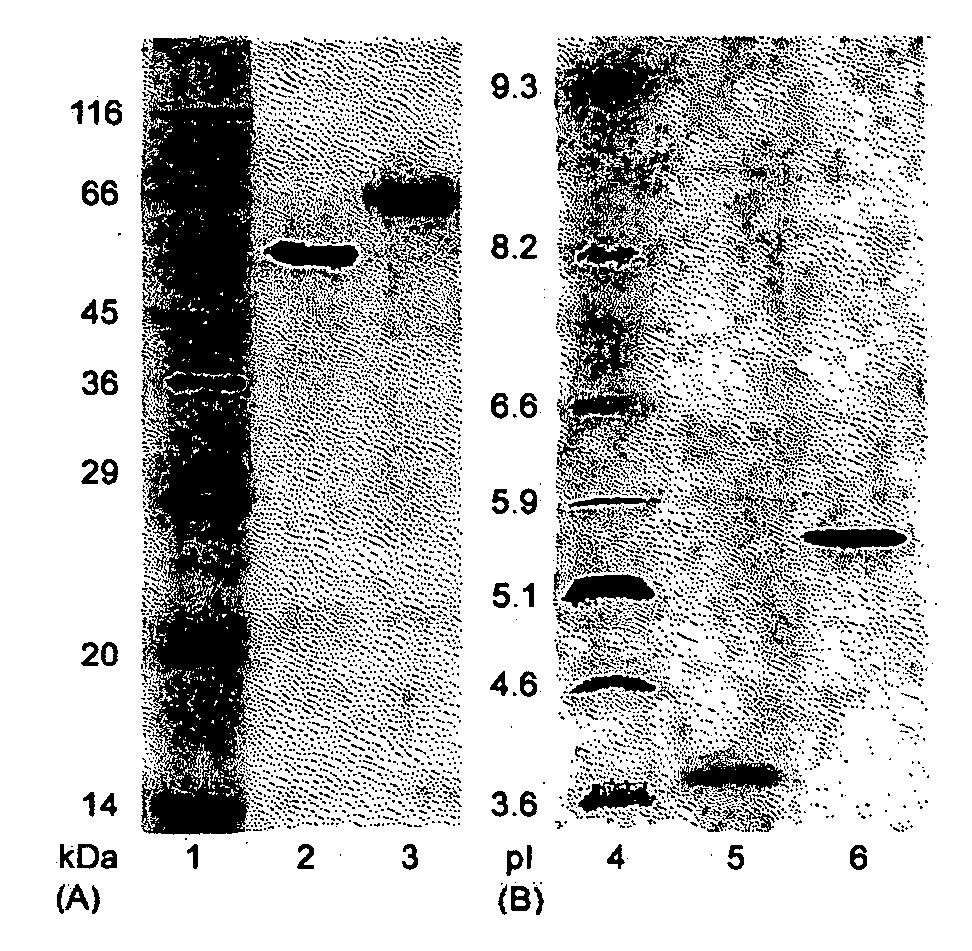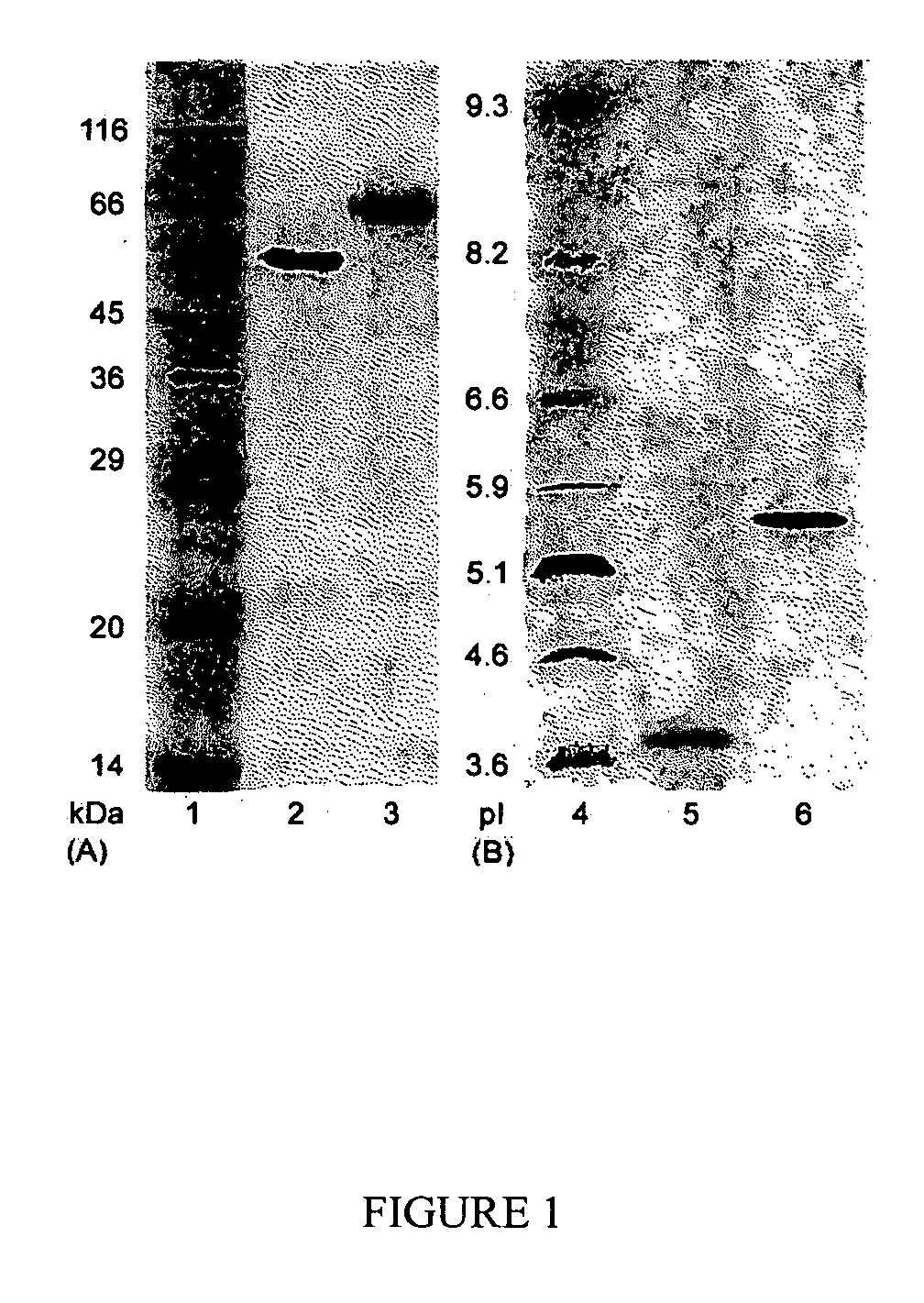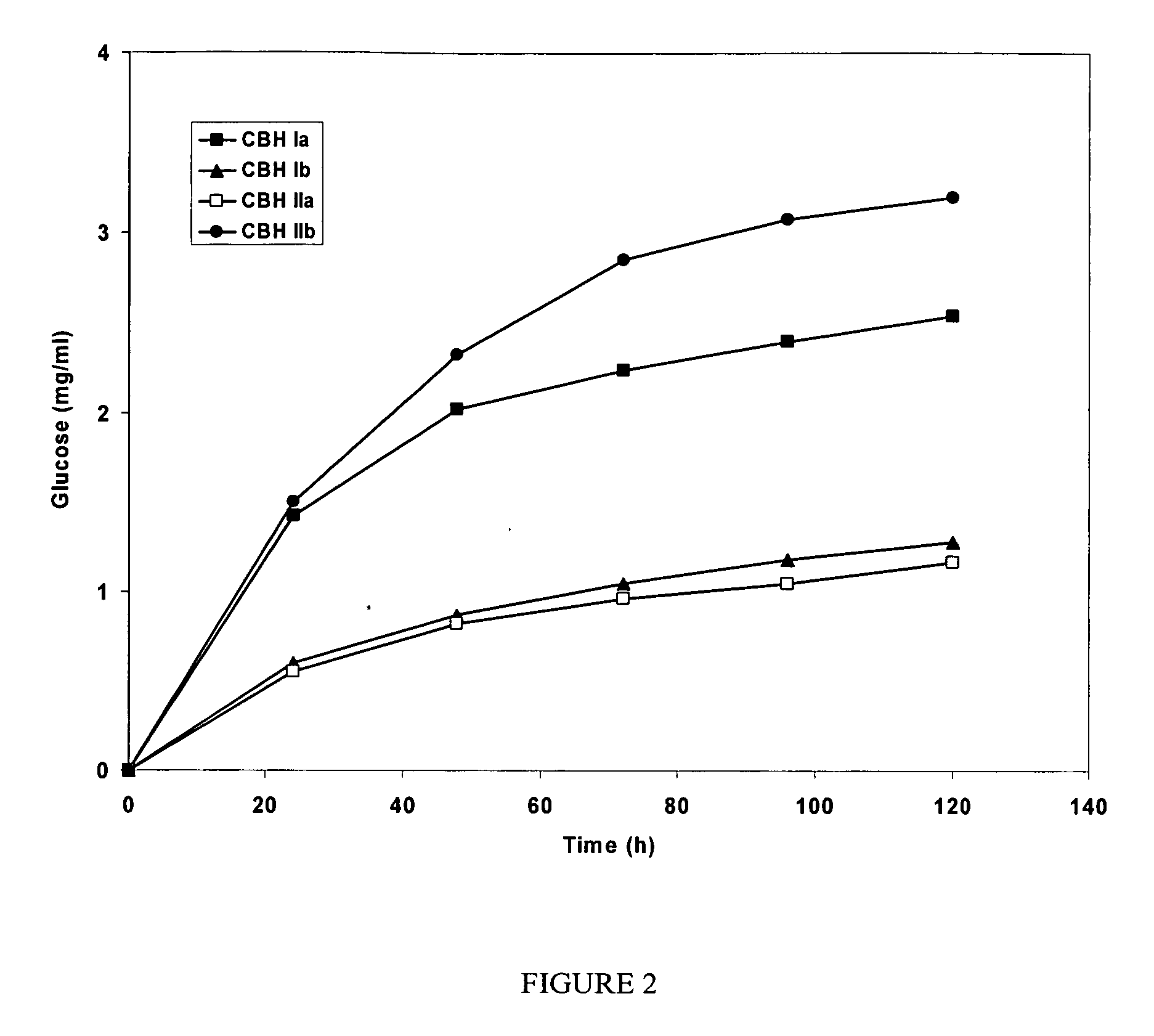Construction of highly efficient cellulase compositions for enzymatic hydrolysis of cellulose
a cellulase composition and cellulose technology, applied in the field of cellulose enzymology and cellulase composition construction, can solve the problems of limiting the commercialization of biomass bioconversion processes, the cost and hydrolytic efficiency of enzymes, etc., and achieves high activity, high enzyme composition efficiency, and pronounced synergy
- Summary
- Abstract
- Description
- Claims
- Application Information
AI Technical Summary
Benefits of technology
Problems solved by technology
Method used
Image
Examples
example 1
Enzyme Isolation
[0079] Culture filtrates produced by the C. lucknowense mutant strains were used for isolation of individual enzymes. Commercial preparation of NCE-L600 (C. lucknowense) were from Dyadic International, Inc., USA.
[0080] Highly purified BGL (cellobiase) from Aspergillus japonicus was obtained from a commercial preparation, having specific cellobiase activity 50 U mg−1 protein (pH 5.0, 40° C.), and was used in the experiments on hydrolysis of insoluble cellulose.
example 2
Enzyme Purification
[0081] The enzyme purification was carried out by chromatography on a Pharmacia FPLC system (Sweden). Cellobiohydrolases and endoglucanases BGL and Xyl II were isolated from a C. lucknowense UV18-25 culture filtrate. BGL and Xyl II (xylanase II) were isolated from culture filtrates produced by the C. lucknowense UV18ΔCbh1#10 and Xyl2-18 mutant strains, respectively.
[0082] In all cases, the first purification stage was anion-exchange chromatography on a Source 15Q column (40 ml volume). The column was equilibrated with 0.02 M Bis-Tris-HCl buffer, pH 6.8. The initial culture filtrate was preliminarily desalted and transferred into the starting buffer by gel-filtration on Acrylex P4 (Reanal, Hungary). The sample (400 mg of protein) was applied to the Source 15Q column, and the elution was carried out with a gradient of 0-1 M NaCl at a flow rate of 10 ml min−1.
[0083] The first protein fraction after the Source 15Q, eluted at 0.05 M NaCl and having high Avicelase a...
example 3
MALDI-TOF and Tandem TOF / TOF Mass Spectrometry of Peptides
[0090] The in-gel tryptic digestion of the protein bands after the SDS-PAGE was carried out essentially as described by Smith (Smith B E. Protein sequencing protocols. Totowa: Humana Press; 1997). Trypsin (Promega, modified, 5 μg / mL) in 50 mM NH4HCO3 was used for a protein digestion. The resulting peptides were extracted from a gel with 20% aqueous acetonitrile containing 0.1% trifluoroacetic acid and subjected to MALDI-TOF MS (see, James P. (Ed.) Proteome research: mass spectrometry. Berlin: Springer-Verlag; 2001.) Selected peptides from the mass spectra of the tryptic digests of the CBH Ib and IIb were analyzed by tandem mass spectrometry in order to determine their sequences de novo. Ultraflex TOF / TOF mass spectrometer (Bruker Daltonik Gmbh, Germany) was used in the MS experiments.
PUM
| Property | Measurement | Unit |
|---|---|---|
| molecular mass | aaaaa | aaaaa |
| concentration | aaaaa | aaaaa |
| concentration | aaaaa | aaaaa |
Abstract
Description
Claims
Application Information
 Login to View More
Login to View More - R&D
- Intellectual Property
- Life Sciences
- Materials
- Tech Scout
- Unparalleled Data Quality
- Higher Quality Content
- 60% Fewer Hallucinations
Browse by: Latest US Patents, China's latest patents, Technical Efficacy Thesaurus, Application Domain, Technology Topic, Popular Technical Reports.
© 2025 PatSnap. All rights reserved.Legal|Privacy policy|Modern Slavery Act Transparency Statement|Sitemap|About US| Contact US: help@patsnap.com



